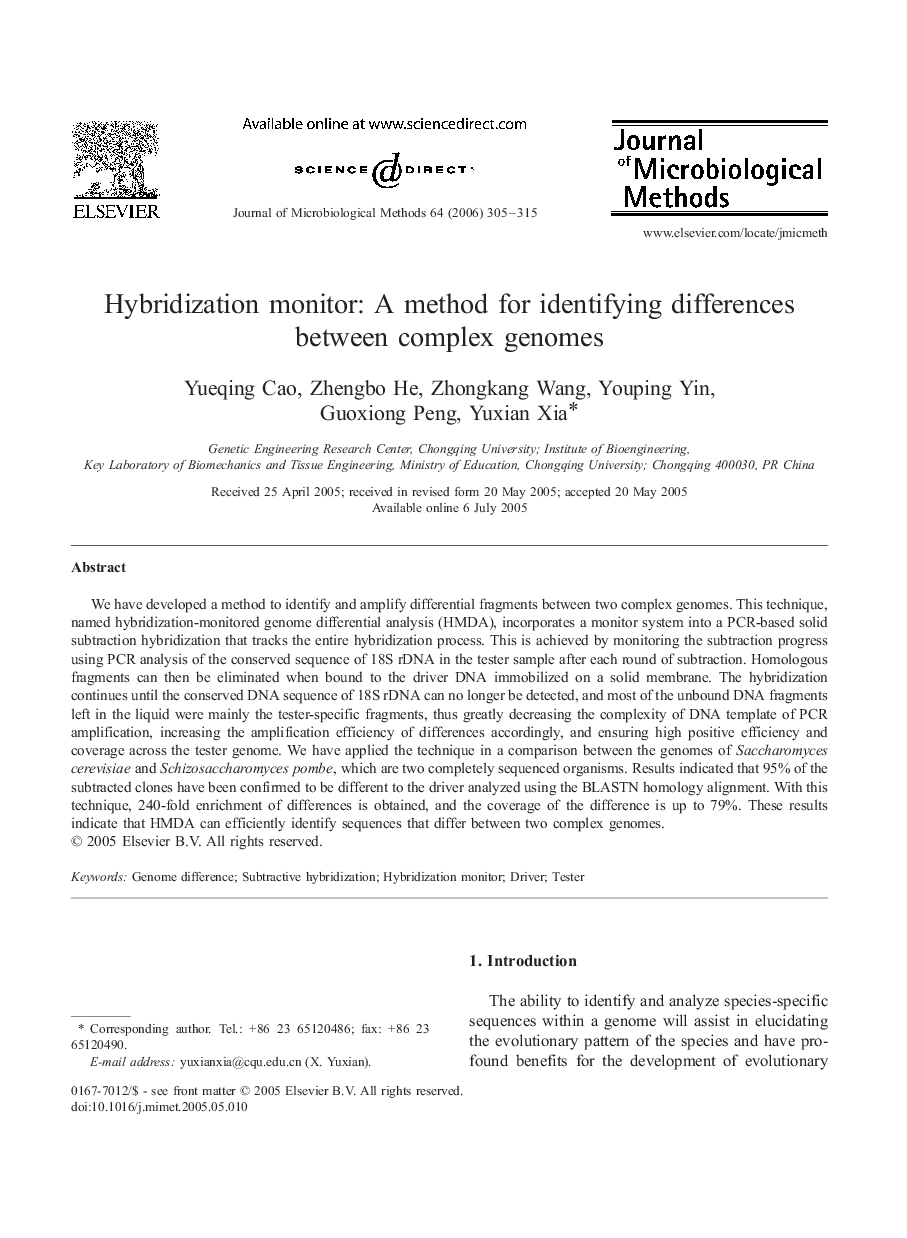| کد مقاله | کد نشریه | سال انتشار | مقاله انگلیسی | نسخه تمام متن |
|---|---|---|---|---|
| 2091348 | 1081542 | 2006 | 11 صفحه PDF | دانلود رایگان |
عنوان انگلیسی مقاله ISI
Hybridization monitor: A method for identifying differences between complex genomes
دانلود مقاله + سفارش ترجمه
دانلود مقاله ISI انگلیسی
رایگان برای ایرانیان
موضوعات مرتبط
علوم زیستی و بیوفناوری
بیوشیمی، ژنتیک و زیست شناسی مولکولی
بیوتکنولوژی یا زیستفناوری
پیش نمایش صفحه اول مقاله

چکیده انگلیسی
We have developed a method to identify and amplify differential fragments between two complex genomes. This technique, named hybridization-monitored genome differential analysis (HMDA), incorporates a monitor system into a PCR-based solid subtraction hybridization that tracks the entire hybridization process. This is achieved by monitoring the subtraction progress using PCR analysis of the conserved sequence of 18S rDNA in the tester sample after each round of subtraction. Homologous fragments can then be eliminated when bound to the driver DNA immobilized on a solid membrane. The hybridization continues until the conserved DNA sequence of 18S rDNA can no longer be detected, and most of the unbound DNA fragments left in the liquid were mainly the tester-specific fragments, thus greatly decreasing the complexity of DNA template of PCR amplification, increasing the amplification efficiency of differences accordingly, and ensuring high positive efficiency and coverage across the tester genome. We have applied the technique in a comparison between the genomes of Saccharomyces cerevisiae and Schizosaccharomyces pombe, which are two completely sequenced organisms. Results indicated that 95% of the subtracted clones have been confirmed to be different to the driver analyzed using the BLASTN homology alignment. With this technique, 240-fold enrichment of differences is obtained, and the coverage of the difference is up to 79%. These results indicate that HMDA can efficiently identify sequences that differ between two complex genomes.
ناشر
Database: Elsevier - ScienceDirect (ساینس دایرکت)
Journal: Journal of Microbiological Methods - Volume 64, Issue 3, March 2006, Pages 305-315
Journal: Journal of Microbiological Methods - Volume 64, Issue 3, March 2006, Pages 305-315
نویسندگان
Yueqing Cao, Zhengbo He, Zhongkang Wang, Youping Yin, Guoxiong Peng, Yuxian Xia,